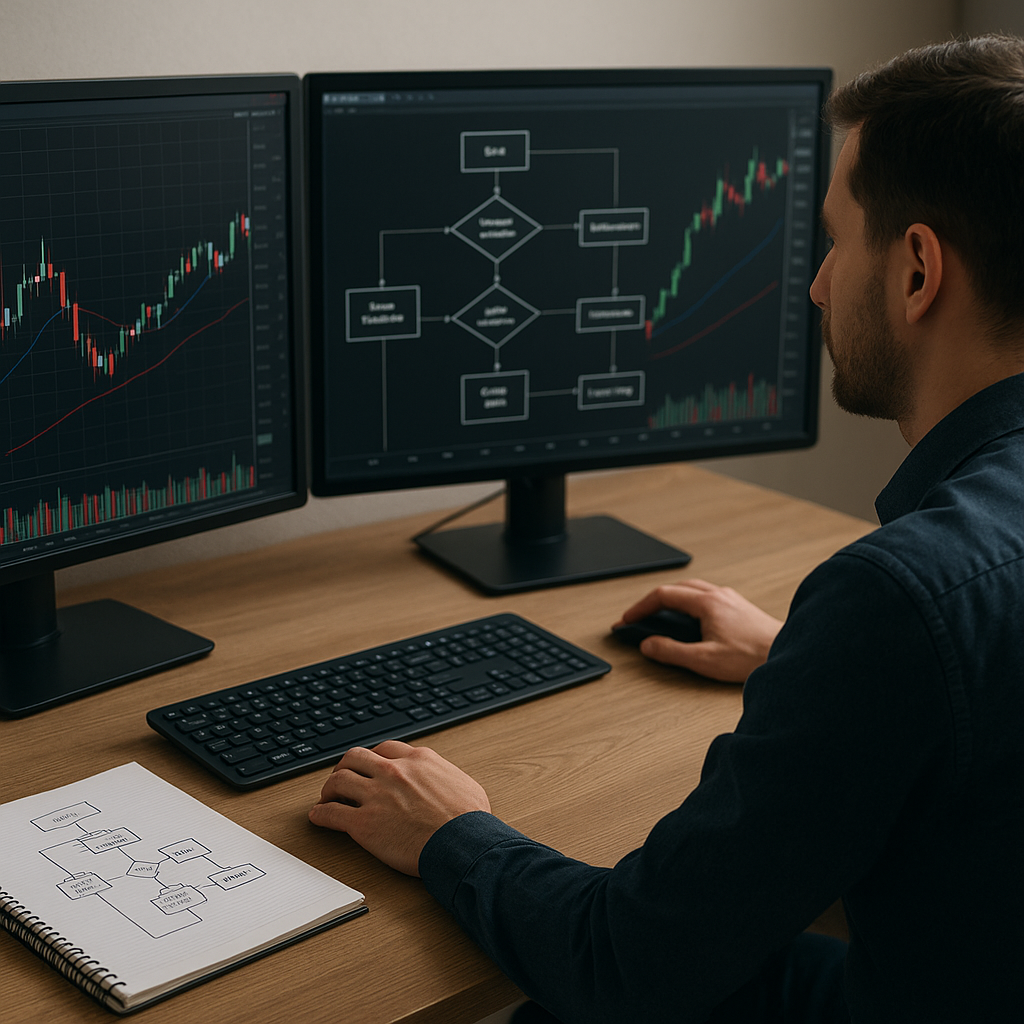Algorithmic trading in the foreign exchange market combines cutting-edge technology with financial expertise to create automated systems capable of analyzing, executing, and managing trades. By harnessing computational power and quantitative methods, traders can develop robust strategies that react swiftly to ever-changing market dynamics. This article explores the essential steps and considerations for building a successful algorithmic forex trading system.
Understanding the Fundamentals of Forex Markets
Before diving into code and data, it’s crucial to grasp the core concepts that drive currency trading. The forex market is the largest and most liquid financial market in the world, with daily volumes exceeding $6 trillion. Key factors include macroeconomic indicators, geopolitical events, and central bank policies, all of which influence exchange rates.
- Currency pairs: Pricing always involves two currencies, e.g., EUR/USD, where the first currency is the base and the second is the quote.
- Bid-ask spread: The difference between the price buyers pay and sellers accept, which represents a transaction cost.
- Leverage: Using borrowed funds to amplify potential gains and losses; typical retail leverage ranges from 10:1 to 50:1.
- Liquidity: The ease with which an asset can be bought or sold without affecting its price. Major pairs offer high liquidity and tighter spreads.
- Volatility: Price fluctuations over time; high volatility presents opportunities and risks for algorithmic strategies.
Understanding these elements lays the foundation for selecting appropriate timeframes, determining trade frequency, and choosing indicators that align with market characteristics.
Designing the Algorithmic Framework
At the heart of any automated trading system is a well-defined framework that guides strategy development. This involves:
- Data acquisition: Obtaining high-quality historical and real-time data, including tick-by-tick prices, economic calendars, and news feeds. Reliable data sources minimize slippage and execution errors.
- Signal generation: Defining the logic that produces buy or sell alerts. Popular methods include:
- Technical indicators (e.g., moving averages, RSI, Bollinger Bands)
- Statistical arbitrage models (e.g., cointegration, mean reversion)
- Machine learning classifiers (decision trees, neural networks) trained to recognize patterns in price action
- Execution algorithms: Automating the placement of orders to minimize market impact. Techniques like VWAP (Volume Weighted Average Price) and TWAP (Time Weighted Average Price) help achieve better fills.
- Risk parameters: Setting stop-loss and take-profit levels, position sizing rules, and maximum drawdown thresholds. Defining these limits protects the trading capital and ensures long-term sustainability.
When designing, maintain flexibility to adjust parameters and incorporate new models. A modular architecture, where components like data handlers, strategy engines, and risk modules communicate via APIs, enhances scalability and maintainability.
Implementing and Testing Strategies
Once the framework is in place, translate your strategy logic into code. Common languages include Python, C++, and Java, each offering unique advantages. Python’s rich ecosystem of libraries (Pandas, NumPy, TA-Lib) makes it a popular choice for rapid prototyping.
Backtesting Process
Backtesting evaluates how a strategy would have performed historically:
- Use clean, adjusted data to avoid look-ahead bias.
- Simulate realistic trading conditions, accounting for spreads, slippage, and commissions.
- Analyze performance metrics such as Sharpe ratio, win rate, drawdown, and net profit.
A thorough backtest can reveal hidden flaws or overfitting. Implement walk-forward optimization to continuously retune parameters on rolling windows of data, ensuring the strategy adapts to evolving market regimes.
Forward Testing and Paper Trading
After backtesting, transition to a live-like environment without risking real capital. Paper trading allows you to assess execution quality, latency, and data feed reliability. Monitor the system for bugs, connectivity issues, or unexpected behavior.
Risk Management and Optimization
Effective risk management differentiates successful trading systems from those that fail. Even the most profitable signal can lead to ruin without strict controls.
- Position sizing: Use methods like fixed fractional, Kelly criterion, or volatility-based sizing to determine position volumes relative to account equity.
- Diversification: Trade multiple, uncorrelated currency pairs or strategy variants to spread risk.
- Drawdown controls: Implement automated shutdown triggers if the system suffers losses beyond a predefined threshold.
- Real-time monitoring: Track P&L, open orders, margin usage, and risk exposures through dashboards or alerts.
Optimization involves fine-tuning strategy parameters to improve performance without overfitting. Techniques include genetic algorithms, grid search, and Bayesian optimization. Always validate improvements via out-of-sample tests.
Deployment and Continuous Improvement
Deploying your algorithmic system to a production environment involves:
- Choosing a reliable broker with robust APIs and low-latency connections.
- Setting up secure, redundant servers or cloud instances to ensure uptime and protect against hardware failures.
- Implementing logging and error-handling routines to capture anomalies.
- Automating notifications for system health checks, trade executions, and risk alerts.
Algorithmic systems require ongoing maintenance. Market conditions shift, economic events change, and new data sources emerge. Establish a feedback loop where performance data feeds back into strategy refinement. Regularly review and update your models, and remain vigilant for software updates and security patches.
Building a Sustainable Edge
Ultimately, a profitable algorithmic forex trading system relies on a sustainable edge. This edge may stem from superior data processing, faster execution, novel signal generation, or rigorous risk discipline. By combining solid market understanding with disciplined development practices, you can craft systems that navigate the complexities of currency investing and stand the test of time.




